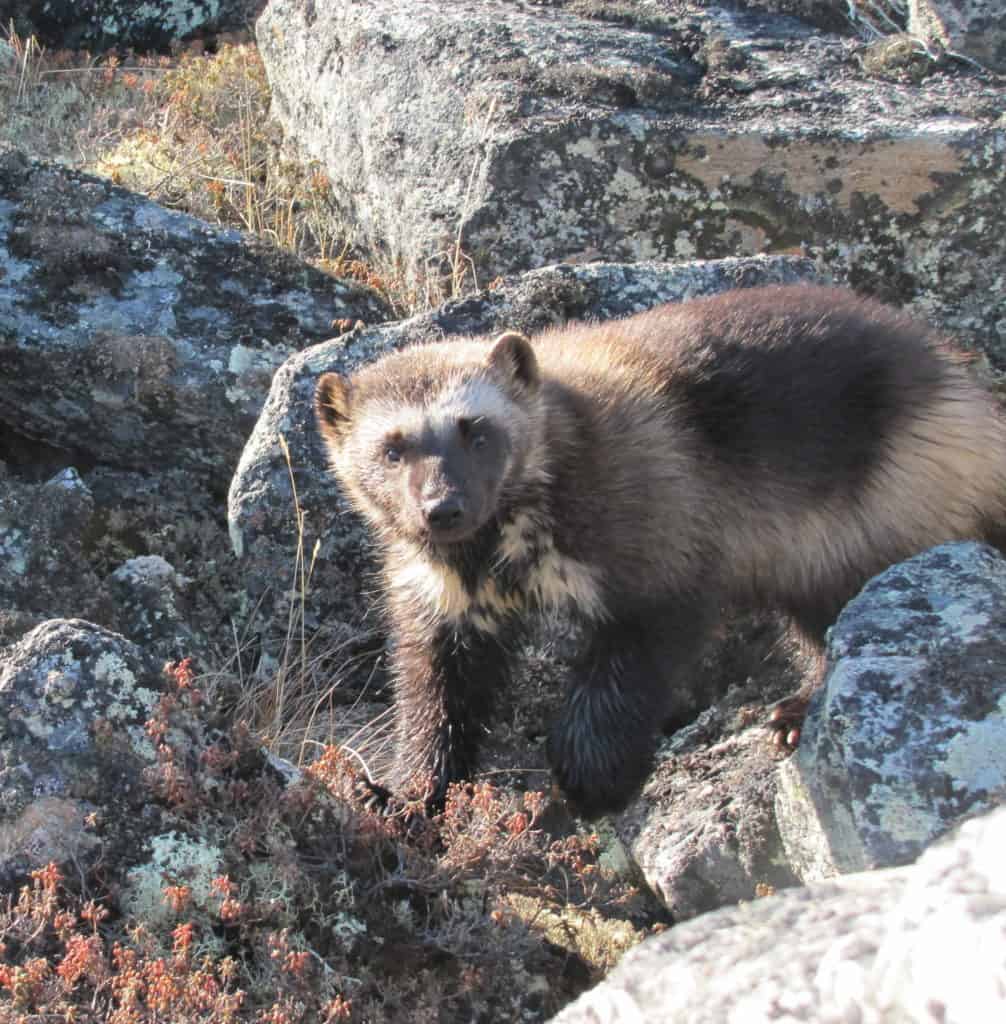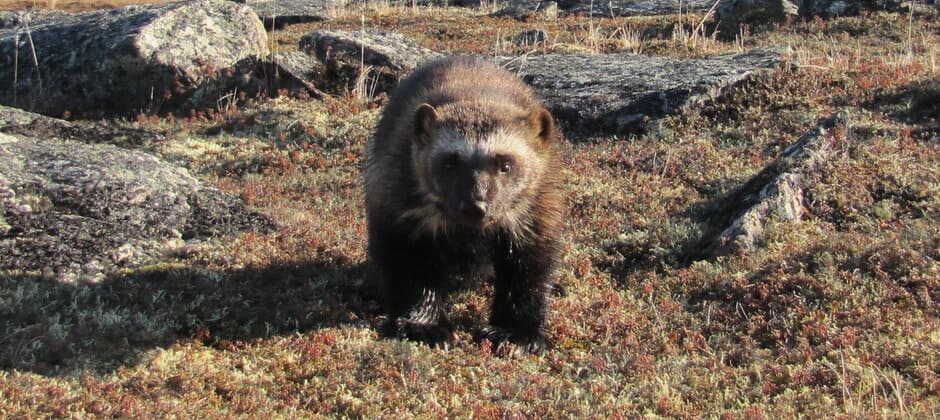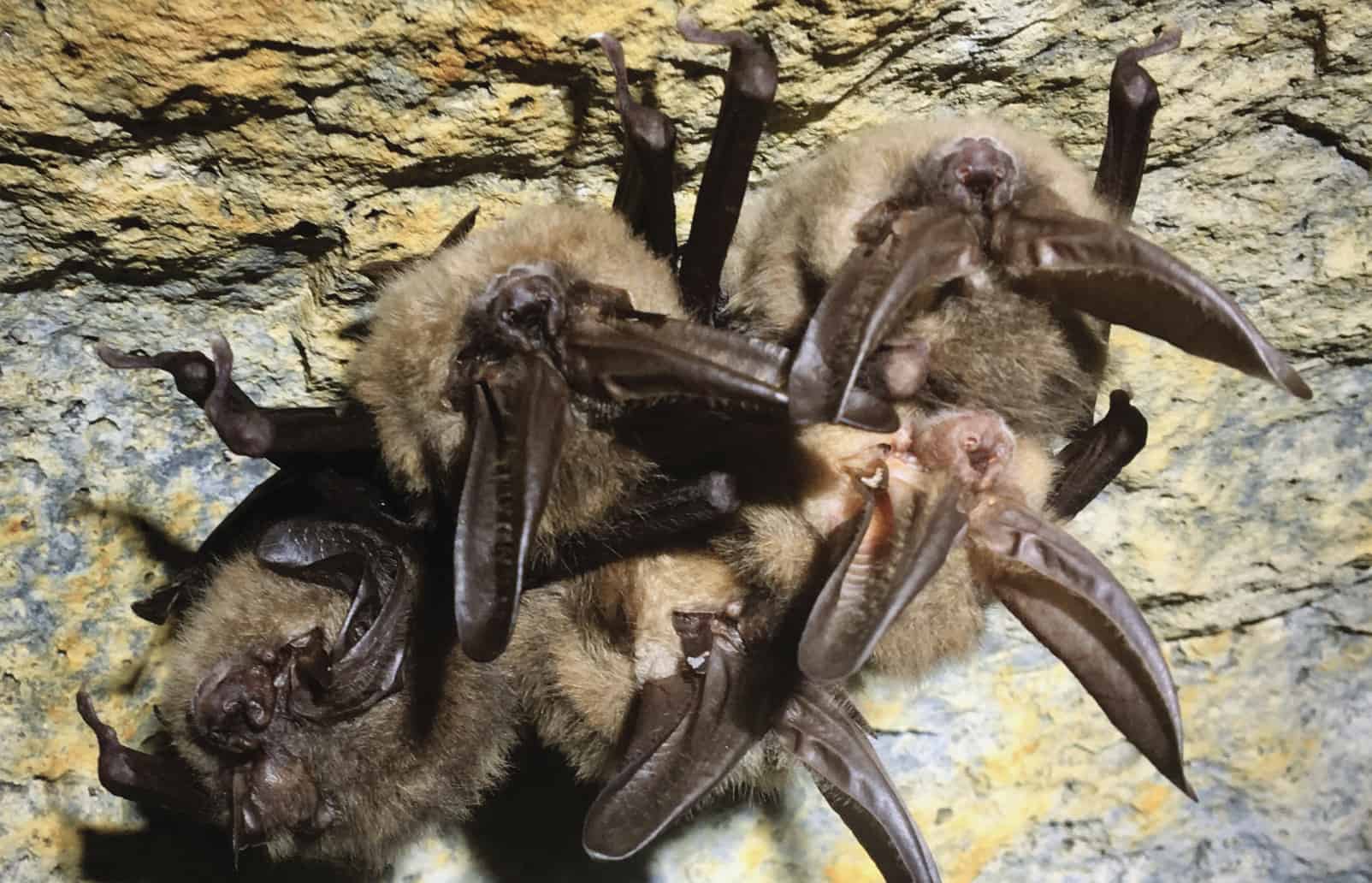Share this article
Worldwide wolverine analysis reveals research gaps
Two decades of wolverine research conducted across the northern part of the globe has revealed that the main obstacle to their success is habitat loss, though climate change and other factors play a role in their decline in some areas.
Studying wolverines is difficult due to their cryptic nature, large ranges and low densities. Researchers wanted to better understand the animals’ ecological needs and population trends. To do so, they gathered all the research they could find on the carnivores from the past 20 years across all the northern countries where they are found. They published their findings recently in Global Ecology and Conservation.
The researchers found the amount of research on wolverines (Gulo gulo) differed based on the country. Most studies on the weasels was conducted in Canada, followed by the United States, then Scandinavian countries. Despite the fact that wolverines are found across northern boreal forests, Jason Fisher, head of the Applied Conservation Macroecology (ACME) Lab at the University of Victoria and the lead author of the study, said that they found nearly no research on the animals in China, Mongolia or Russia.
Fisher, a TWS Member, and his co-authors also found countries were associated with different topics of study when it came to wolverines. In the United States, most studies focused on the effects of snowpack cover on wolverine populations. But most research conducted in Scandinavia involved overharvesting, since Sami pastoralists often killed the animals to protect their reindeer (Rangifer tarandus) herds. Canadian studies focused on climate change as well as impacts of disease and trapping.

Wolverine populations suffer from habitat loss and a loss of connectivity between suitable habitats, among other problems. Credit: Damian Power
Location of the studies also led to disagreements regarding the causes of wolverine decline.
For example, Fisher said that wolverines in states like Wyoming and Montana are mostly found in the higher altitude mountainous areas, which led some researchers to consider the weasels deep snow obligates in the U.S. Researchers there point to climate change, especially decreasing snow pack, as a main cause of low populations in the lower 48 states.
But other research conducted in Alberta showed that the animals don’t need much snow when they can den in upturned trees and other features found in the boreal forest. In northern Alaska, some evidence even suggests they might den in permafrost caves.
By comparing these different studies of wolverines, Fisher said that it’s possible that human development has pushed the animals into higher altitude areas in the southern end of their range in the U.S. They might not necessarily need snow if they have deep forest, but in high altitude areas devoid of forest, deep snow becomes important. “These bastions of wilderness were the last places we pushed them, so that’s one big reason why they live where there’s snow,” Fisher said.
Climate is an issue in these high elevation areas, he said, but the larger issue is habitat loss pushing wolverines toward these areas in the first place. In their new reality, wolverines need to travel between mountain ranges, so loss of landscape connectivity is also a problem for wolverines in North America.
“All the information strongly suggests that they’re being hit from every angle,” Fisher said.
The research also showed overharvesting is a main problem in parts of British Columbia. Meanwhile, linear features like seismic surveying lines cut by oil and gas explorers in northern Alberta and British Columbia may boost wolf (Canis lupus) predation on juvenile wolverines. In areas closer to human development, coyotes (Canis latrans) might be outcompeting wolverines for food sources.
However, with all of these challenges, the researchers found few conservation actions in place for wolverines.
In southern British Columbia, some action was taken to reduce the pressure of overharvesting. In Sweden, the government created a system that paid pastoralists for every wolverine den found on their herding range.
Overall, though, Fisher and his colleagues found that public consciousness about these animals had increased in the last 20 years. The number of studies has also increased greatly due in part to new technology like trail cameras and DNA research. But a number of gaps in the research on wolverines persist.
“It’s almost the species that time forgot in a lot of jurisdictions,” he said. Even in Canada, where most research has been done on the animals, the studies were mostly conducted without the benefit of much funding.
“It’s really a bunch of good-hearted individuals working with almost nothing trying to piece things together,” Fisher said.
Header Image:
A wolverine in British Columbia. Most wolverine research in the world has been conducted in Canada.
Credit: Damian Power








